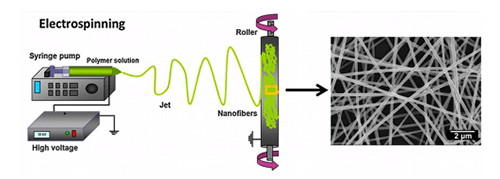Copyright © 2022 Foshan MBRT Nanofiberlabs Technology Co., Ltd All rights reserved.Site Map
Tissue engineering makes use of the principles of medicine, biology and engineering and integrates them into the design of biological substitutes to restore, maintain and improve the functions of tissue. To fabricate a functional tissue, the engineered structures have to be able to mimic the extracellular matrix (ECM), provide the tissue with oxygen and nutrient circulation as well as remove metabolic wastes in the period of tissue regeneration. Continued efforts have been made in order to fabricate advanced functional three-dimensional scaffolds for tissue engineering. Electrospinning has been recognized and served as one of the most useful techniques based on the resemblance between electrospun fibers and the native tissues. Over the past few decades, a bewildering variety of nanofibrous scaffolds have been developed for various biomedical applications, such as tissue regeneration and therapeutic agent delivery. The present review aims to provide with researchers an in-depth understanding of the promising role and the practical region of applicability of electrospinning in tissue engineering and regenerative medicine by highlighting the outcomes of the most recent studies performed in this field. We address the current strategies used for improving the physicochemical interactions between the cells and the nanofibrous surface. We also discuss the progress and challenges associated with the use of electrospinning for tissue engineering and regenerative medicine applications.

Published: 2021
Journal :PROG MATER SCI
Impact Factor:33.91
Paper link:https://www.sciencedirect.com/science/article/abs/pii/S0079642520300852